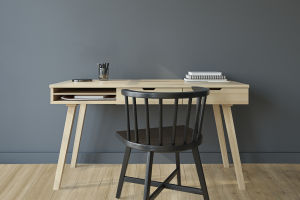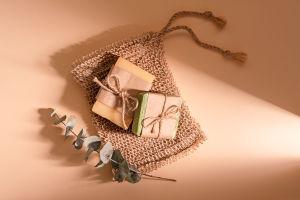Top Boards for Cabinets
Choosing the right board for cabinet making is crucial to ensuring beauty, durability, and functionality.
With various types of boards available on the market, each offers unique advantages and disadvantages that must be considered.
Particle Board
Particle board is created by breaking down wood or sapwood into small particles and then pressing them with adhesive. This board has a low production cost, is easy to process, and has good anti-deformation and anti-cracking properties.
Its good nail-holding capacity makes it popular among many domestic brands for use as wardrobe boards. However, if poor-quality glue is used, the environmental performance of particle boards can be concerning.
It also has weak moisture resistance and limited modeling capability, making it unsuitable for wardrobes that require intricate designs.
Multi-Layer Solid Wood Board
Multi-layer solid wood board is made by slicing wood into thin layers and stacking them together with adhesives. The number of layers is usually odd, such as three, five, or seven, with varying thicknesses. This board has a uniform surface, stable structure, and minimal deformation.
It is also moisture-resistant and can adjust to indoor temperature and humidity changes. The more layers a multi-layer board has, the higher its strength and price. Additionally, it is lightweight, easy to move, and can be disassembled and reassembled, making it a good choice for wardrobe boards.
However, the surface cannot be repaired if damaged, and it may deform under prolonged sun exposure. High production standards and numerous steps are required in its manufacturing process, so many big brands do not recommend it, although some small manufacturers might.
If a bad adhesive is used, the environmental performance might not be better than that of particle board, making it important to choose environmentally friendly options.
Big Core Board
A big core board is a type of special plywood with a middle layer consisting of spliced wooden strips sandwiched between two veneers. This thick board is recommended for cabinet-making by carpenters.
It has high strength, good nail-holding capacity, excellent sound insulation, and heat insulation properties, with low moisture content. When choosing a big core board, opt for an E1 grade board for better quality.
The surface layers of the veneer should be at least 3mm thick to ensure durability during use. However, this board often has cavities inside, and glue usage needs to be considered for environmental protection. It is highly susceptible to moisture, making it unsuitable for kitchens and bathrooms.
The longitudinal bending strength is poor due to the longitudinally spliced wood strips, leading to deformation after long-term use. The width of the board core should not exceed 2.5 times its thickness to avoid deformation. Additionally, the high price of the board might be a disadvantage for budget-conscious individuals.
Ecological Board
Ecological boards are typically made from fast-growing materials such as pine, poplar, fir, and eucalyptus. The core material usually consists of a big core board and multi-layer board, sometimes including particle board, with a layer of paper imitating wood texture on the surface.
These boards have a wide range of uses, primarily in furniture, cabinets, wardrobes, and bathroom cabinets, offering various surface colors and patterns. They do not require painting, reducing the painting process and improving environmental performance.
Ecological boards are easy to process and resistant to color changes, making them suitable for creating personalized furniture with good load-bearing capacity. They can last up to 10 years without deformation, providing good value for money.
However, the surface layer of wood grain paper cannot be repaired if damaged, and the glue marks on the board are often visible, giving it a low-grade appearance. Edge sealing can be challenging, and generally, only straight-edge sealing is possible.
Finger-Jointed Board
Finger-jointed boards are environmentally friendly and made by joining small wooden blocks with sawtooth joints, resembling interlocked fingers. These boards do not require a surface layer and are widely used.
They offer excellent environmental performance and a natural texture, with most boards being made of fir or camphorwood, which also provides insect resistance without the need for additional treatments like camphor balls.
Finger-jointed boards have good moisture absorption and air permeability, use less glue than core boards, and can be directly painted on the surface, making them more environmentally friendly and affordable.
However, they are prone to deformation and cracking and cannot withstand horizontal stress, making them unsuitable for wardrobes and only usable as side panels for cabinets.
Choosing the right board for cabinet making involves considering multiple factors, including aesthetics, durability, price, and environmental protection.
It is essential to select environmentally certified products to ensure safe and healthy use. Regardless of the board type, make a reasonable decision based on the specific use environment and needs.


